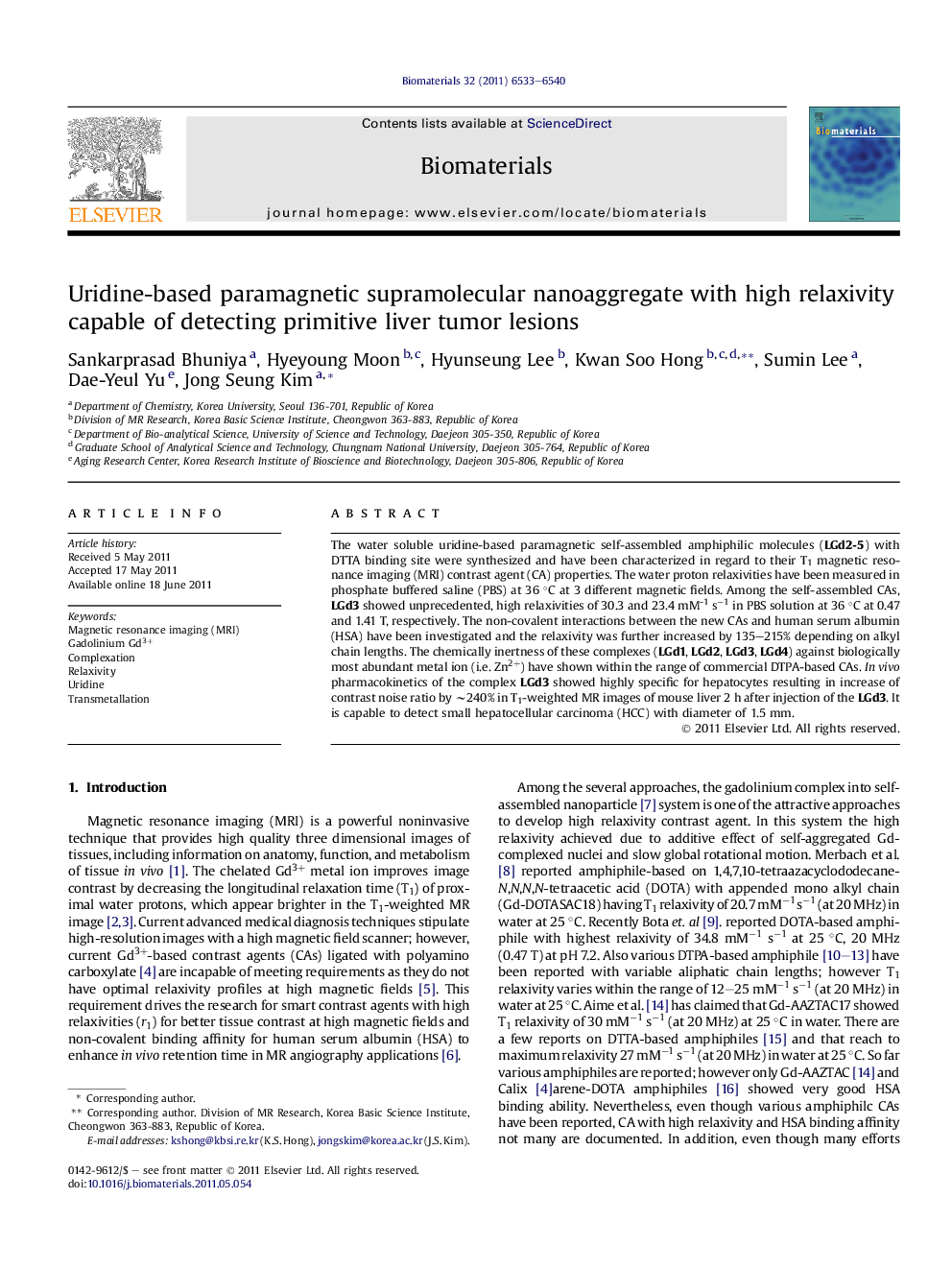| Article ID | Journal | Published Year | Pages | File Type |
|---|---|---|---|---|
| 10229582 | Biomaterials | 2011 | 8 Pages |
Abstract
The water soluble uridine-based paramagnetic self-assembled amphiphilic molecules (LGd2-5) with DTTA binding site were synthesized and have been characterized in regard to their T1 magnetic resonance imaging (MRI) contrast agent (CA) properties. The water proton relaxivities have been measured in phosphate buffered saline (PBS) at 36 °C at 3 different magnetic fields. Among the self-assembled CAs, LGd3 showed unprecedented, high relaxivities of 30.3 and 23.4 mM-1 sâ1 in PBS solution at 36 °C at 0.47 and 1.41 T, respectively. The non-covalent interactions between the new CAs and human serum albumin (HSA) have been investigated and the relaxivity was further increased by 135-215% depending on alkyl chain lengths. The chemically inertness of these complexes (LGd1, LGd2, LGd3, LGd4) against biologically most abundant metal ion (i.e. Zn2+) have shown within the range of commercial DTPA-based CAs. In vivo pharmacokinetics of the complex LGd3 showed highly specific for hepatocytes resulting in increase of contrast noise ratio by â¼240% in T1-weighted MR images of mouse liver 2 h after injection of the LGd3. It is capable to detect small hepatocellular carcinoma (HCC) with diameter of 1.5 mm.
Related Topics
Physical Sciences and Engineering
Chemical Engineering
Bioengineering
Authors
Sankarprasad Bhuniya, Hyeyoung Moon, Hyunseung Lee, Kwan Soo Hong, Sumin Lee, Dae-Yeul Yu, Jong Seung Kim,
